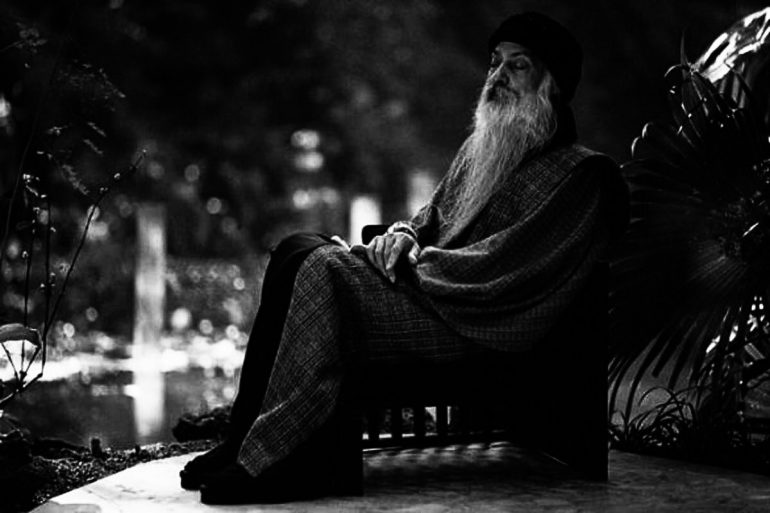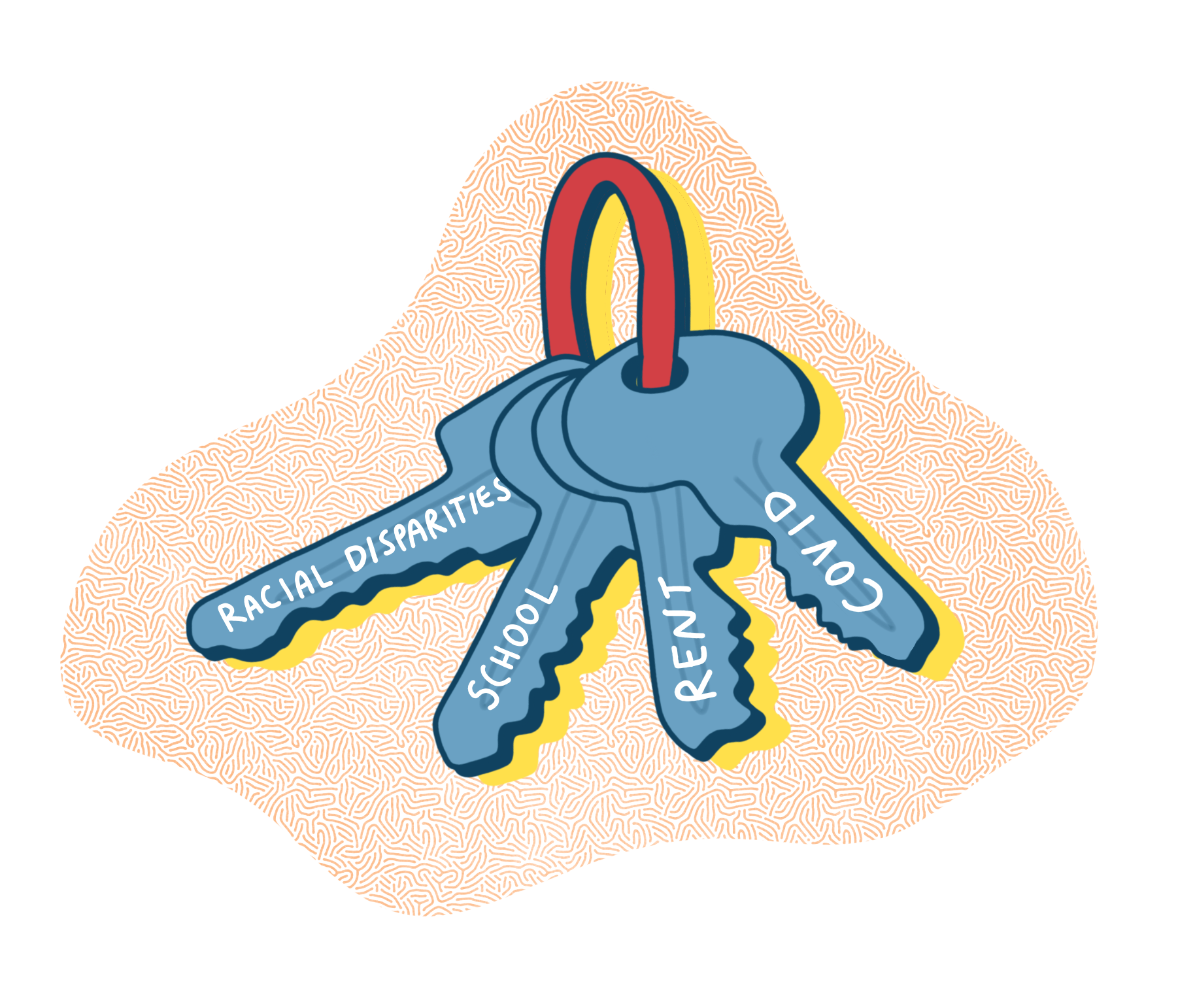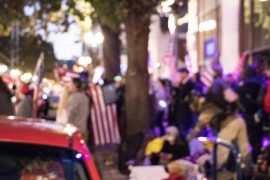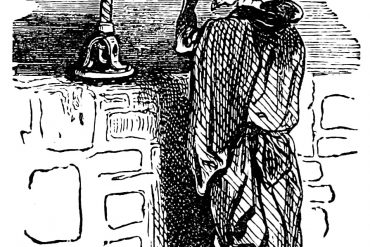Between Aug. 29 and Oct. 10, 1984, 751 people in The Dalles, OR unexpectedly contracted food poisoning. 41 of those individuals had to be hospitalized. Fortunately, there were no fatalities, and it seemed as though a large-scale disaster had been unwittingly averted. The salad bars of ten local restaurants were later found to have been contaminated with Salmonella culture. It would take one whole year before the Oregon Public Health Division (OPHD) and the Centers for Disease Control (CDC) discovered that the Salmonella outbreak was in fact premeditated. Two officials from a commune in Wasco County, OR were later arrested and convicted on charges of attempted murder in connection with the poisonings.
This marked the rapid decline of the Rajneeshpuram commune-turned-city, the uncanny origin of the bioterror attack.
In order to fully understand the magnitude of what later came to be known as the 1984 Rajneeshee bioterror attack, it is necessary to go back to Rajneeshpuram’s inception and chief architect, whose nickname is the basis for the name of the spiritual community. The behind-the-scenes story of the attack is both unsettling and incredulous.
Rajneesh (Dec. 11, 1931-Jan. 19, 1990), born Chandra Mohan Jain, was also commonly referred to and known as Acharya Rajneesh, Bhagwan Shree Rajneesh, Bhagwan, or Osho. From humble beginnings in a small village in the Madhya Pradesh state in central India, Rajneesh grew up to become a self-proclaimed and rebellious anti-theist, but was studious and engrossed in his schoolwork. His precociousness led him to develop into a promising student, and at the age of nineteen, Rajneesh enrolled in Hitkarini College in Jabalpur, a city roughly 125 miles east of his hometown of Kuchwada. After going through what he described as a mystical experience under the shade of a tree in Jabalpur, Rajneesh claimed to have become spiritually enlightened on March 21, 1953.
Later on, he completed his B.A. in philosophy in 1955 and then earned an M.A. in philosophy in 1957. Afterwards, while teaching as a professor, Rajneesh began to travel and lecture outside of academic institutions which eventually led to him amassing a large following. His teachings were also appealing to the higher echelons of society, and quite a few of his more wealthy supporters ended up becoming patrons. His discourses regularly discussed capitalism, science, and technological advances, while being critical of institutional religions, socialism, and popular figures such as Mahatma Gandhi.
Over the course of a decade, Rajneesh ascended to the status of renowned spiritual leader. He was known to run multiple therapeutic meditation camps, and as a direct result of his work, meditation centers sprang up in India toting Rajneesh’s teachings and principles, known at the time as the Life Awakening Movement. With a very devoted and growing fanbase, he began to accept disciples into his following. One of Rajneesh’s first disciples, Laxmi Thakarsi Kuruwa, became his personal secretary. The daughter of one of his early supporters and patrons, Laxmi had powerful ties to politicians and political parties. She eventually helped Rajneesh raise enough money to give up travelling in order to temporarily settle in Mumbai, where followers and visitors could more easily attend his teachings.
After health-related setbacks, Rajneesh’s team purchased two large houses on six acres of land in western India; this came to be known as his “ashram” (religious retreat in East Indian religions), a spiritual community, oasis, and retreat. Until 1981, the ashram was the Rajneeshee home to intellectual and spiritual teaching, lecturing, and group therapy sessions. By the late 1970s, Rajneesh’s community thrived and received on average 30,000 visitors a year, with many of those visitors coming from abroad, mainly Europe and North America. Rajneesh had originally started out disseminating philosophical and spiritual discourse, but now his ashram had become distinguished for unconventional and controversial group therapy sessions that involved violence and questionable sexual encounters. The Indian government gradually caught wind of Rajneesh’s fandom and attempted to put an end to the flourishing community. The government cracked down on Rajneesh with allegations of drug use within his disciples, tax fraud, and physical harm to his followers and vistors. In addition to pressure from the government to continue operation, the ashram was growing at an unsustainable rate.
So he upped and relocated to Eastern Oregon.
Rajneesh replaced his secretary-turned-personal-assistant with another female disciple, Ma Anand Sheela, who helped arrange the establishment of a new ashram in the U.S. It turned out that Laxmi was let go for failing to secure a new location in India. In 1981, the initial stages of a new Rajneeshee utopia commenced. 64,229 acres of farmland stretching across Wasco and Jefferson County in Oregon was purchased for $5.75 million, with much of the proceeds coming from generous donors and supporters. The acquired property was previously known as “The Big Muddy Ranch,” but was fittingly renamed to “Rancho Rajneesh.” The residents of the new ashram quickly moved to incorporate the commune as the city of “Rajneeshpuram.” A mall, post office, airport, various centers and halls, even a public transit system, and many other community structures were built to legitimize the brand new Western Rajneeshee spiritual mecca. The farmland was cultivated for growing clean, organic produce, and the ashram was passed off as a farming community so as to stay within legal boundaries.
The Rajneeshpuram craze caused mass hysteria in the first half of the 1980s; the ashram-turned-city exploded in size and population. Thousands of homeless people from everywhere in the U.S. were brought in on buses and given homes to live in and a new purpose in life. New citizens of Rajneeshpuram were encouraged to vote in local elections in order to sway them in their favor. The Rajneeshees even pestered the neighboring city of Antelope, OR, eventually taking over the Antelope city council and renaming the city to “Rajneesh.” Needless to say, Rajneesh’s fresh new home in the wild west was met with criticism and outcry from Oregonian locals who opposed the development of an overtly religious city. As a result, the Big Muddy Rajneeshee Rancho was the subject of multiple legal cases and investigations between 1981 and its disbandment in 1987.
After the move to Oregon, Rajneesh’s activity as enlightened spiritual guru declined due to age, increasing health problems, and piecemeal legal hurdles. He became secluded, spent most of his time in his trailer, and rarely made public appearances. For a few years, Rajneesh took a break from teaching. At one point, he owned 93 Rolls Royces, which made him the single largest owner of the high-end cars in the world. His community of disciples, followers, and supporters showed their devotion to the great Osho by increasing the private collection to an excessive total of 365 Rolls Royces, one for every single day of the calendar year. The citizens of Rajneeshpuram only saw him in one of his cars from time to time, driving by in the city or on his way home to his trailer. By this point in time, Rajneesh entrusted most of the city’s decision making to a communal matriarchal council. He also entrusted Sheela, his personal assistant and now-president of the Rajneesh International Foundation, with a great deal of authority to call the shots in his stead. Consequently, as the ‘80s rolled on, tension between Rajneesh’s coterie spearheaded by Sheela and the Rajneeshpuram community leaders arose.
Following their previous success in conquering Antelope, OR, Rajneeshee officials in late 1984 took a run at the Wasco County Circuit Court in order to continue their expansion of influence. In an attempt to secure two out of three seats in the November 1984 election, Sheela and other community leaders orchestrated incredulous maneuvers. The Dalles, OR, Wasco County’s most populated city, was targeted and biological agents in the form of Salmonella culture were deployed to incapacitate non-Rajneeshee voters between August and October of 1984. Many innocent citizens came down with illnesses and 751 cases of gastroenteritis were reported in the area.
On election day, irate local residents showed up in large crowds to prevent a Rajneeshee victory. Many suspected that they were responsible for the large-scale poisonings. In the end, they were triumphant.
The Rajneeshees pulled their candidates out of the election after facing severe backlash from neighboring communities. Multiple state and federal agencies investigated the Salmonella contamination in The Dalles, OR. Poor hygiene on the part of food handlers was initially blamed, although the investigations never ruled out bioterrorism. Rumors of the Rajneeshpuram conspiracy circulated, but no evidence could back up the claim that they had a hand in the intentional poisoning of establishments in The Dalles.
A few months later on Feb. 28, 1985, Oregon Congressman at the time, James Howard Weaver, spoke in the U.S. House of Representatives and directly accused the Rajneeshees of contaminating salad bars with Salmonella. The evidence he presented was circumstantial and many thought Howard was bandwagoning on the Rajneeshee-hate-train.
Then, after having fallen out of the public eye for a few years, Rajneesh broke his silence. By July 1985, Rajneesh had returned to regularly practicing his teachings. He came out and stated that it was time for him “to speak his own truths.” When Sheela and other inner-circle disciples mysteriously left Rajneeshpuram for Europe out of the blue, Rajneesh held a damning press conference. In Sept. 1985, roughly one year after the Salmonella incident, he publically blamed Sheela and her team of associates for the 1984 bioterror attack as well as other alleged crimes carried out without his knowledge, such as attempted murder of Rajneesh’s doctor, more poisonings of authority figures, and espionage within Rajneeshpuram and Rajneesh’s living quarters.
Though Rajneesh’s claims were at first met with public suspicion, further investigations by U.S. authorities confirmed his allegations. Investigators discovered numerous glass vials of Salmonella in medical clinics in Rajneeshpuram. The CDC later concluded that the Salmonella culture discovered in Rajneeshpuram was an exact match to the contaminated salad bars in The Dalles, OR. Sheela and her confidants were hunted down and convicted shortly after.
Half a month later, Rajneesh renounced his status as religious teacher. Everything started to go downhill. The ashram’s citizens and supporters burned 5,000 copies of the 78-page book of scriptures, “The Book of Rajneeshism.” The signature orange robes disciples and followers wore were also burnt in a giant bonfire. Hundreds of Rajneeshees deserted Rajneeshpuram for good. The American Rajneeshee paradise had been desecrated by wicked corruption, and Rajneesh had no choice but to save face and leave before it was too late.
The aftermath of Rajneeshpuram’s total collapse was ugly. The entire city was dissolved and the remaining valuables were sold off in auctions, including the impressive collection of 365 Rolls Royces. Sheela was extradited and sentenced to a total of 59 years for attempted murder, first-degree assault, second-degree assault, wiretapping conspiracy, and orchestrating the 1984 Rajneeshee bioterror attack. She was released on parole due to good behavior after serving 29 months in a minimum-security federal prison. Sheela now lives in Switzerland. Rajneesh was given a ten-year suspended sentence, five years of probation, and a hefty fine. He left the U.S. in November 1985 and never returned. Rajneesh rebranded himself back in India as “Osho” and continued to deliver public discourses at his old ashram. He died of natural causes on Jan. 19, 1990.
This article originally appeared in the print edition of our March 2018, issue.





